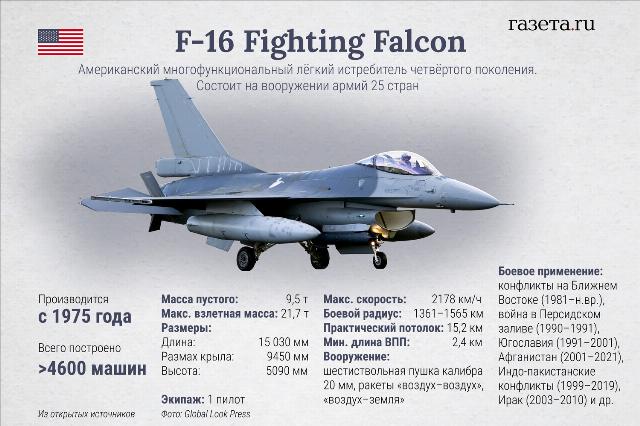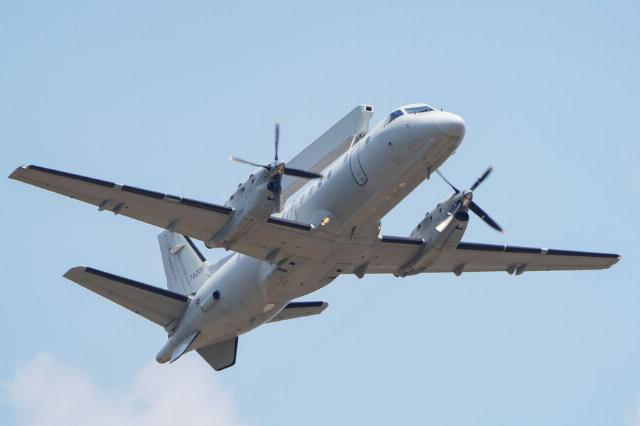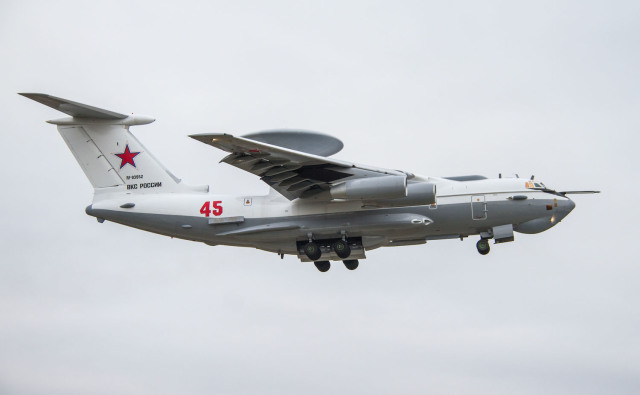Colonel Khodarenok: The Swedish ACS-890 reconnaissance aircraft may be shot down by the S-400
The first of two long-range radar detection and control aircraft promised by Sweden has arrived in Ukraine. What he can do and how much he will strengthen the combat capabilities of the Ukrainian Air Force is in the material of the military observer Gazeta.Ru", retired Colonel Mikhail Khodarenka.
Kyiv has received the first of two Saab 340 AEW&C (ACS 890) long-range radar detection and control aircraft promised by Sweden. He has already been spotted in the airspace over the territory of Western Ukraine. According to UNIAN, ACS-890 conducted a test flight over Lviv.
The aircraft is relatively small in its geometric dimensions (compared to the E-3 Sentry). The ACS 890 crew consists of six people, the take-off weight of the machine is 13 155 kg, the wingspan is 21.44 m, the length is 20.57 m. The aircraft is equipped with two American General Electric CT7-9B turboprop engines.
Compared to traditional all-round radar on AWACS and U aircraft (such as the E-3 Sentry or A-50U), the Saab 340 is equipped with a fixed PS-890 Erieye radar developed by Ericsson Microwave Systems (now Saab Electronic Systems).
The two-way active phased array (AFAR), housed in a 9-meter-long fairing, consists of 192 receiving and transmitting modules. The electronically scanned beam provides viewing of the space in the sector of 150 degrees from each side. The disadvantage of the radar is the presence of invisible sectors of 30 degrees each in front and behind the aircraft.
The detection range of the PS-890 Erieye radar of aerial objects with a large reflective surface at altitudes of 10-11 thousand meters is approximately 450 km. A modern multi-role fighter at medium altitudes can be detected by the PS-890 Erieye radar at significantly shorter ranges. In the best case, no more than 350 km.
Aircraft with low EPR at low altitudes against the background of the underlying surface can be detected by a Saab 340 AEW&C (ACS 890) aircraft at ranges up to 180 km. Note that all the listed performance characteristics are based only on the developer's data. The actual combat use of the ACS 890 will surely show completely different data (as, however, is usually the case in war).
What will they give Kiev?
The Swedish Defense Ministry said that these aircraft would provide Ukraine with "completely new aerial radar reconnaissance capabilities." Let's see how much this corresponds to reality.
No matter how strange it may look, there is no great need for ACS 890 aircraft to appear in the combat strength of the Ukrainian Air Force at this stage. Currently, the Armed Forces of Ukraine receive a significant amount of intelligence information from the collective Western space reconnaissance vehicles and from unmanned aerial vehicles. So the increase in intelligence from one AWACS and U aircraft (which is in the air for a relatively short time) will be small.
The role of ACS 890 would certainly be great as an aerial command post (in terms of controlling large masses of fighters). But for this, it is necessary that the combat strength of the Ukrainian Air Force include several F-16 fighter aviation regiments, and large-scale air battles would take place in the country's airspace.
 |
| Infographic of the F-16. |
| Source: Alina Djus/"Newspaper.Ru" |
In practice, there is neither the first nor the second. And, in fact, in this case, the ACS 890 must have at least a regiment (at least 20 vehicles) so that they, alternating with each other, are continuously in the air, controlling the fighters.
When at least 120-150 multifunctional fighters appear in the combat strength of the Ukrainian Air Force, then air command posts will be in full demand. Apparently, this will not happen soon.
Now let's imagine a situation in which an ACS 890 aircraft of the Ukrainian Air Force conducts aerial reconnaissance in its area, being relatively close to the front edge (otherwise you can't scout anything) at an altitude of at least 6 km, writing figures of eight or ellipses in the air. In this case, the "Swedish scout" is simply an ideal target for long-range air defense systems such as the S-400.
It is unlikely that the Ukrainian Armed Forces will use ACS 890 as a means of conducting aerial reconnaissance in the near future. Most likely, the only AWACS and U aircraft will be located at one of the airfields of Western Ukraine, since the loss of a combat vehicle of this type can lead to great reputational losses for the Armed Forces of Ukraine.
The opinion of the author may not coincide with the position of the editorial board.
Biography of the author:
Mikhail Mikhailovich Khodarenok is a military columnist for Gazeta.Ru", retired colonel.
He graduated from the Minsk Higher Engineering Anti-Aircraft Missile School (1976), the Military Air Defense Command Academy (1986).
Commander of the S-75 anti-aircraft missile division (1980-1983).
Deputy commander of the anti-aircraft missile regiment (1986-1988).
Senior Officer of the General Staff of the Air Defense Forces (1988-1992).
Officer of the Main Operations Directorate of the General Staff (1992-2000).
Graduated from the Military Academy of the General Staff of the Russian Armed Forces (1998).
Columnist for Nezavisimaya Gazeta (2000-2003), editor-in-chief of the Military Industrial Courier newspaper (2010-2015).
Mikhail Khodarenok


